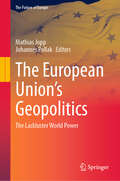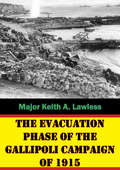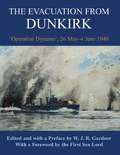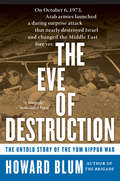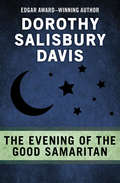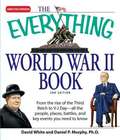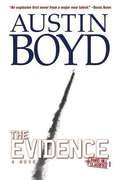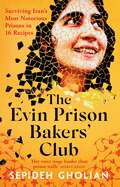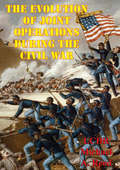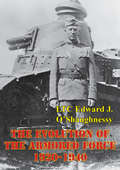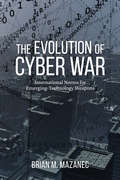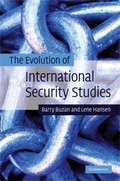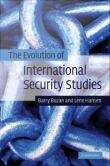- Table View
- List View
The European Union and Military Force
by Per M. Norheim-MartinsenThe Common Security and Defence Policy maps out how the EU - established primarily to be an economic organisation - can purposefully prepare for and apply the use of military force. In this insightful work, Per M. Norheim-Martinsen argues that, since the EU is not a state but nevertheless does embody some non-intergovernmental characteristics, neither EU studies nor strategic studies is sufficient for fully understanding the Policy itself. Combining the two fields, the author utilises the instrumentality and clarity of the strategic approach, while retaining an understanding of the unique character of the EU as a strategic actor. In so doing, he provides a fruitful conceptual framework for analysing the development of the CSDP, how it functions in practice and how it will continue to evolve in the face of the challenges which lie ahead. This book will appeal to scholars and advanced students of European studies, international relations and strategic studies.
The European Union’s Geopolitics: The Lackluster World Power (The Future of Europe)
by Johannes Pollak Mathias JoppThe book deals with the urgent need for the EU to position itself globally in the wake of Brexit, a rapidly worsening climate crisis, the COVID-19 pandemic, an aggressive Russia, and an ever more assertive China. After 60 years of intensive navel gazing that focused on institutional design more than world politics, the EU is now forced to defend its liberal democratic values, which have come under attack from inside and outside the European integration project. Moreover, Realpolitik is back on the agenda. Europe’s content negligence of defense matters in the past few decades has been revealed by Russia’s war of aggression against Ukraine.
The Evacuation Phase Of The Gallipoli Campaign Of 1915
by Major Keith A. LawlessThis battle study investigates operational and tactical considerations of the battles of Arracourt, which took place in September 1944 as the 4th Armored Division of Patton's Third Army clashed with the Fifth German Panzer Army in the French province of Lorraine on the U.S. drive to the German West Wall.By examining detailed German and American unit histories, logs, and summaries, as well as personal papers, this study illuminates differences and similarities in reporting the U.S. penetration from the Nancy Bridgehead to Arracourt, the German offensive at Lunéville as a prelude to Arracourt, and the two German offensives at Arracourt, as the Fifth Panzer Army attempted to link up with a German unit cut off at Nancy.Arracourt exemplifies penetration and mobile defense and illustrates the demand for good intelligence and flexible command and control. It shows the inherent risks of piecemeal commitment of reserves, the need for timely orders and good logistical support, as well as the tactical advantages of air superiority.
The Evacuation from Dunkirk: 'Operation Dynamo', 26 May-June 1940 (Naval Staff Histories)
by W.J.R. GardnerThis is the Naval Staff History of "Operation Dynamo", originally published internally in 1949. British ships evacuated nearly 100,000 men of the BEF from the beaches, and over 200,000 from harbours. Other nations' vessels carried more than 30,000.
The Eve of Destruction: The Untold Story of the Yom Kippur War
by Howard BlumOn October 6, 1973--Yom Kippur, the holiest day of the Jewish calendar--the Arab world launched a bold and ingeniously conceived surprise attack against Israel. After three days of intense, bloody combat, an unprepared Israel was fighting for survival, while the Arabs, with massive forces closing in on the Jewish heartland, were poised to redeem the honor lost in three previous wars. Based on declassified Israeli government documents and revealing interviews with soldiers, generals, and intelligence operatives on both sides of the conflict, The Eve of Destruction weaves a suspenseful, eye-opening story of war, politics, and deception. It also tells the moving human tale of the men and women who fought to maintain love and honor as their lives and destinies were swept up in the Yom Kippur War.
The Evening of the Good Samaritan
by Dorothy Salisbury DavisBefore, during, and after World War II, three generations of men make their mark on the world in acclaimed author Dorothy Salisbury Davis&’s vibrant, thought-provoking novel that scrutinizes the conscience of men in a time of crisisAs Europe slides toward war, the faculty of a midwestern university fight a crusade of their own—the campaign against Communism. The local publishing magnate has accused economics professor Jonathan Hogan of being a Red, and the scholar is forced to defend himself in front of the university&’s elders. They spare him, for Hogan is no Communist—merely a free thinker, open and honest in an age when conformity is the norm. When war threatens the United States, he is one of those whom his country will need most.Jonathan goes into civil service during the war, advising the government on the economic impacts of the conflict. His son Marcus takes a different route, studying surgery in an attempt to heal those whom the savagery of war has maimed. And, years later, Jonathan&’s grandson Tad will follow his own conscience, too, when he comes violently of age. But what are the consequences of standing by one&’s principles in an era when darkness threatens to overwhelm civilization?
The Everafter War (The Sisters Grimm Book #7)
by Michael BuckleySabrina and Daphne's prayers are finally answered when their parents finally wake up from their sleeping spell. Their happy reunion is short-lived, as they are caught in the middle of a war and shocking secrets are revealed.
The Everyday and Far Away: The perfect bookclub read for fans of Rachel Joyce
by Jacqueline Jones'I was moved to tears by its quiet beauty and layered characters.' Laura Pearson, author of The Last List of Mabel Beaumont For fans of Sally Page and Ruth Hogan, comes this heartwarming tale about love, loss and connection Ernie has had three grand passions in his long life: his dear wife Phyllis, a vintage Norton Dominator motorcycle, and his mini-me son, Stephen. Now, as dementia overwhelms Ernie and takes away everything he can remember about the everyday, memories of those far away times remain crystalline and cherished. His granddaughter Nina, seventeen, is equally at odds with the everyday. Excluded from college for her lack of concentration, it seems a job in her mother&’s greengrocers is the best life can ever offer. Endless time stretches bleakly ahead, yet Nina feels she can barely make it to the end of each day. Until, that is, Nina stumbles upon a surprise which, it turns out, can save both Ernie and herself…
The Everything World War II Book
by David White Daniel P. MurphyFrom Germany's invasion of Poland in 1939 to the official end of World War II on 2 September 1945,The Eveything World War II Book, 2nd Editionprovides readers with detailed information about the war that left no nation untouched. Clear maps and vivid photographs bring this war to life and illustrate the major battles in the European, Pacific, and African theaters. The Everything World War II Book, 2nd Editionis packed with exhaustively researched information. Revised and updated by two experienced historians, this engrossing reference contains new information on the United Nations, World War II memorials, and a timeline of important dates. There's no need to search through stacks of history books -The Everything World Ward Book, 2nd Editionhas all that readers need to learn about this fascinating time in history.
The Evidence (Mars Hill Classified, Book #1)
by Austin BoydAfter waiting his entire life to become an astronaut, John Wells's nearly realized dream is turning into a nightmare. As the nation's capital comes under intense terrorist attack and signs of sophisticated alien life mysteriously appear on the Internet, Wells finds himself increasingly entangled in a web of global deceit---with his marriage, his life, and the planet on the line!
The Evin Prison Bakers' Club: Surviving Iran's Most Notorious Prisons in 16 Recipes
by Sepideh Gholian16 recipes testifying to the sisterhood and solidarity forged in the most notorious prisons in Iran 'A remarkable testimony to women&’s bravery, compassion and solidarity in the harshest of conditions… Think Nigella crossed with Nelson Mandela.' SUNDAY TIMES BOOK OF THE WEEK 'A fighting woman cannot be imprisoned because her voice is louder than prison walls. This book is proof.' Shirin Ebadi, Nobel Peace Prize winner How do you cheer up a woman who has spent hours cleaning prison toilets with a broken mop? The secret is in a tres leches cake. In Iran&’s prisons, women endure horrors: they are beaten, interrogated, and humiliated in a thousand ways. Even a whisper to a fellow inmate can be punished. Yet – in spite of anything and everything – they resist: they bake. They console each other, cry together, dance together. Sepideh Gholian, in prison since 2018, bakes scones, pumpkin pies and madeleines, alongside traditional Iranian sweets. The Evin Prison Bakers&’ Club is a call to stand up for Woman, Life, Freedom by a woman still fighting for a free Iran.
The Evolution Of Joint Operations During The Civil War
by LCDR Michael A. ReedHistory has demonstrated that amphibious assaults are among the most complex and challenging of all joint operations. The myriad of factors that evolved independently throughout the war did not become fully integrated until the winter of 1864-65. This thesis explores the maturation of joint amphibious operations during the U.S. Civil War, specifically through the assaults on Fort Fisher. This analysis will use modern joint doctrine as the framework to compare and contrast the two assaults. It will elaborate on how seaborne assaults differ from riverine assaults. Utilizing Fort Fisher as the focus develops an understanding of the interrelationship of these various factors and the challenges posed in their synchronization to achieve success. This study concludes that the operations reflected jointness, but also marked the emergence of modern amphibious assault concepts.
The Evolution Of The Armored Force, 1920-1940
by Ltc Edward J. O’shaughnessy Jr.In armored force circles the inter-war years are sometimes referred to as the "lean years." The abolishment of the separate Tank Corps in 1920, the Depression Era budget constraints and a lack of national strategic vision have caused a mistaken belief that little attention was paid to the development of armored force structure and doctrine in this critical time period. In fact the evidence points to the contrary. Rather than development by a kick start in 1940, the evidence illustrates an evolution of armored doctrine and force structure. The process started immediately upon return from World War I by a core of tank visionaries and advocates. The fruits of their labors were realized in 1940 when war demanded the rapid fielding of armored divisions. The fact that fourteen divisions were fielded in four years, when none had existed previously, is testimony to their efforts. This paper is told from their perspective. In the face of significant institutional obstacles these tank advocates responded to a higher calling. The inter-war period has parallels for us today. Once again we have declared victory, are downsizing our force structure and slashing our defense budget. Will we retain and encourage within our ranks visionaries and advocates to prepare our military for future conflict as we enter a new "lean years" era?
The Evolution of British Counter-Insurgency during the Cyprus Revolt, 1955–1959
by Preston Jordan LimThis book evaluates the prosecution of British counter-insurgency operations during the Cyprus Revolt of 1955-1959. Historians have typically cast the Cyprus Revolt as a failure, situating it within the larger pattern of the post-1945 failure of conventional armies to deal with insurgencies. By analyzing the reminiscences of British policemen, National Servicemen, and officers both junior and senior, the study provides a ground-up assessment of the British counter-insurgency effort. The work examines also the contradictions gripping Greek and Turkish Cypriot opinion, arguing that developments during this time period set the scene for intercommunal violence in the 1960s and 1970s. Military history is taken in a broad sense and includes the Cypriot government’s attempts to control its image in the eyes of international opinion. By intimately dealing with indigenous news outlets like the Times of Cyprus and Halkın Sesi, this book offers lessons for modern policymakers and civil servants concerned with the importance of sound press strategy.
The Evolution of Cyber War: International Norms for Emerging-Technology Weapons
by Brian M. MazanecFormer secretary of defense Leon Panetta once described cyber warfare as “the most serious threat in the twenty-first century,” capable of destroying our entire infrastructure and crippling the nation. <p><p> Already, major cyber attacks have affected countries around the world: Estonia in 2007, Georgia in 2008, Iran in 2010, and most recently the United States. As with other methods of war, cyber technology can be used not only against military forces and facilities but also against civilian targets. Information technology has enabled a new method of warfare that is proving extremely difficult to combat, let alone defeat. <p> And yet cyber warfare is still in its infancy, with innumerable possibilities and contingencies for how such conflicts may play out in the coming decades. Brian M. Mazanec examines the worldwide development of constraining norms for cyber war and predicts how those norms will unfold in the future. Employing case studies of other emerging-technology weapons—chemical and biological, strategic bombing, and nuclear weaponry—Mazanec expands previous understandings of norm-evolution theory, offering recommendations for U.S. policymakers and citizens alike as they grapple with the reality of cyber terrorism in our own backyard.
The Evolution of International Security Studies
by Barry Buzan Lene HansenInternational Security Studies (ISS) has changed and diversified in many ways since 1945. This book provides the first intellectual history of the development of the subject in that period. It explains how ISS evolved from an initial concern with the strategic consequences of superpower rivalry and nuclear weapons, to its current diversity in which environmental, economic, human and other securities sit alongside military security, and in which approaches ranging from traditional Realist analysis to Feminism and Post-colonialism are in play. It sets out the driving forces that shaped debates in ISS, shows what makes ISS a single conversation across its diversity, and gives an authoritative account of debates on all the main topics within ISS. This is an unparalleled survey of the literature and institutions of ISS which will be an invaluable guide for all students and scholars of ISS, whether traditionalist, 'new agenda' or critical.
The Evolution of International Security Studies
by Barry Buzan Lene HansenProspect Theory: For Risk and Ambiguity provides the first comprehensive and accessible textbook treatment of the way decisions are made both when we have the statistical probabilities associated with uncertain future events (risk) and when we lack them (ambiguity). The book presents models, primarily prospect theory, that are both tractable and psychologically realistic. A method of presentation is chosen that makes the empirical meaning of each theoretical model completely transparent. Prospect theory has many applications in a wide variety of disciplines. The material in the book has been carefully organized to allow readers to select pathways through the book relevant to their own interests. With numerous exercises and worked examples, the book is ideally suited to the needs of students taking courses in decision theory in economics, mathematics, finance, psychology, management science, health, computer science, Bayesian statistics, and engineering.
The Evolution of Military Power in the West and Asia: Security Policy in the Post-Cold War Era (Routledge Global Security Studies)
by Pauline Eadie and Wyn ReesThis book investigates how states in both the West and Asia have responded to multi-dimensional security challenges since the end of the Cold War, focusing on military transformation. Looking at a cross-section of different countries, this volume assesses how their armed forces have responded to a changing international security context. The book investigates two main themes. First, how the process of military ‘transformation’- in terms of technological advances and new ways of conducting warfare - has impacted on the militaries of various countries. These technologies are hugely expensive and the extent to which different states can afford them, and the ability of these states to utilise these technologies, differs greatly. Second, the volume investigates the social dimensions of military transformation. It reveals the expanding breadth of tasks that contemporary armed forces have been required to address. This includes the need for military forces to work with other actors, such as non-governmental agencies and humanitarian organisations, and the ability of armed forces to fight asymmetric opponents and conduct post-conflict reconstruction tasks. The conflicts in Iraq and Afghanistan exemplified how important the relationship between technological and social transformation has become. This book will be of much interest to students of strategic studies, military innovation, Asian politics, security studies and International Relations.
The Evolution of Modern Land Warfare: Theory and Practice (Routledge Library Editions: Military and Naval History)
by Christopher BellamyExtensively illustrated with 52 detailed campaign and battle maps and diagrams, this book, originally published in 1990, surveys the evolution of warfare in Europe from Napoleon to the end of the twentieth century and in Asia from the Middle Ages. It considers the interaction of technology and warfare. With wide-ranging examples, the book includes two in depth case studies, one on the Soviet Operational Manoeuvre Group and its predecessors in the Russian Imperial Army, the other on the history of land warfare, including guerilla warfare, in Asia. In this book the author demonstrates that military history can be of immense practical help to the modern military analyst and professional. Now updated with a new introduction to take into account changes since 1990, this book remains of essential value to students, teachers & professionals in political & social history, international relations, defence, war & peace studies.
The Evolution of Operational Art, 1740-1813: From Frederick the Great to Napoleon (Military History and Policy)
by Claus TelpOperational art emerged from the campaigns of Frederick the Great to the end of the Napoleonic Wars. It was the result of three dynamic interrelationships: between military and non-military factors such as social, economic and political developments; between military theory and practice; and between developments in military theory and practice in France and Prussia.In the period 1740-1815 a major change in the complexity of warfare took place. This was reflected by an increase in the complexity of the analysis of warfare via the introduction of the operational level between the strategic and tactical levels.The evolution of operational art, driven by these three dialectical processes, evolved in stages. In the first stage, Revolutionary France had experimented with operational art though with limited success. Then, Napoleon had used it with remarkable success against an adversary clinging to outdated modes of warfare and organisation. In the final stage, Napoleon's operational art was successfully challenged by the Prussian brand.
The Evolution of Soviet Operational Art, 1927-1991: The Documentary Basis: Volume 1 (Operational Art 1927-1964) (Soviet (Russian) Study of War #No. 6-7)
by Harold S. Orenstein David M. GlantzThis collection of texts has been taken from formerly classified material in the official Red Army General Staff journal 'Military Thought'. The results are two volumes of great scope based on archival evidence. They stand as a compulsory reference point for anyone with an interest in the operational endeavours of the Soviet Army from the 1920's onward.
The Evolution of Soviet Operational Art, 1927-1991: The Documentary Basis: Volume 2 (1965-1991) (Soviet (Russian) Study of War #No. 6-7)
by Harold S. Orenstein David M. GlantzThe Soviet military concept of operational art and the associated theories such as "war of annihilations", "deep battle", and "deep operations" have been observed by the West since World War II. The Soviet government hid their military-theoretical work behind a veil of secrecy. Here, the Soviet theories are revealed in the words of those who created them in peacetime and applied them in war.
The Evolution of Strategic Thought: Classic Adelphi Papers
by Classic Adelphi PapersThe Adelphi Papers monograph series is the International Institute for Strategic Studies' principal contribution to policy-relevant, original academic research. Collected on the occasion of the Institute's 50th anniversary, the twelve Adelphi Papers in this volume represent some of the finest examples of writing on strategic issues. They offer
The Evolution of Strategy
by Beatrice HeuserIs there a 'Western way of war' which pursues battles of annihilation and single-minded military victory? Is warfare on a path to ever greater destructive force? This magisterial new account answers these questions by tracing the history of Western thinking about strategy - the employment of military force as a political instrument - from antiquity to the present day. Assessing sources from Vegetius to contemporary America, and with a particular focus on strategy since the Napoleonic Wars, Beatrice Heuser explores the evolution of strategic thought, the social institutions, norms and patterns of behaviour within which it operates, the policies that guide it and the cultures that influence it. Ranging across technology and warfare, total warfare and small wars as well as land, sea, air and nuclear warfare, she demonstrates that warfare and strategic thinking have fluctuated wildly in their aims, intensity, limitations and excesses over the past two millennia.
The Evolution of U.S. Military Policy from the Constitution to the Present, Volume I: The Old Regime: The Army, Militia, and Volunteers from Colonial Times to the Spanish-American War (G - Reference,information And Interdisciplinary Subjects Ser.)
by Michael Shurkin Gian Gentile Jameson Karns Adam GivensTracing the evolution of the U.S. Army throughout American history, the authors of this four-volume series show that there is no such thing as a “traditional” U.S. military policy. Rather, the laws that authorize, empower, and govern the U.S. armed forces emerged from long-standing debates and a series of legislative compromises between 1903 and 1940. Volume I traces U.S. military policy from the colonial era through the Spanish-American War.

